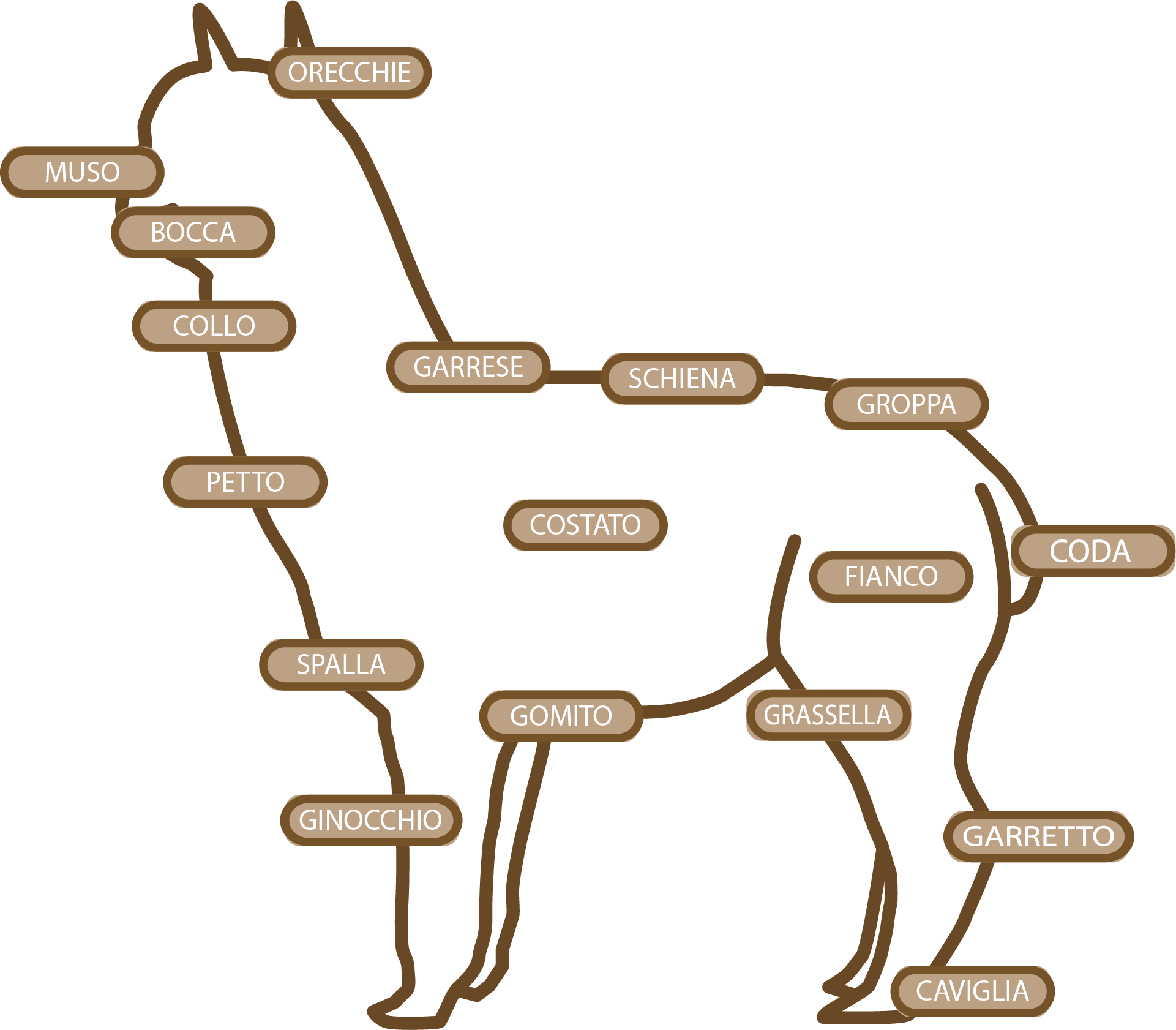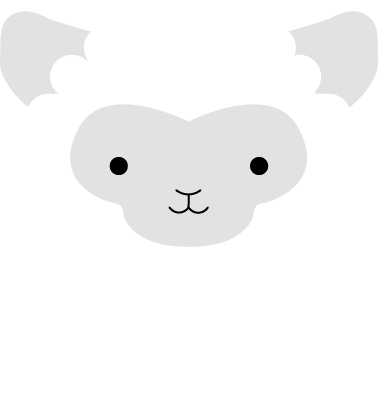Alpacas have a robust anatomy featuring a long and agile neck, strong and muscular legs, a short and sturdy tail, and large, elegant ears. Their snout is small and tapered, with large, dark eyes. The back is arched, and the withers are pronounced. Alpacas can reach a height of 1 meter at the withers and weigh about 70 kilograms. Knowledge of alpaca anatomy is useful for addressing any diseases they may encounter.
Skeletal structure
Alpacas have a very robust skeleton, consisting of 206 bones. This makes them capable of climbing the highest mountains and withstanding harsh temperatures. Their skeleton is composed of long and thin bones, which give the animal its agility. Additionally, the skeletal structure supports the animal’s weight, although they are not particularly heavy: females weigh between 35 and 50 kg, while males can reach up to 70 kg.
Respiratory system
The alpaca’s respiratory system is composed of two well-developed lungs with a lung capacity of about 5 liters. Alpacas can inhale and exhale air very quickly, thanks to the structure of their airways and the presence of a particularly developed diaphragm.

Eyes
Alpaca eyes are medium-sized, with an elongated pupil and a deep black color. The front of the eyes is rather convex, while the back is flat. The inner corners of the eyes are slightly elevated.
Head and neck
The alpaca’s skull is quite small, with a straight muzzle that lacks tusks. The eyes are large and dark, while the nose is elongated. The neck is long and thin, covered with thick, soft fleece. The neck is long and slender, with a clearly visible throat. The dense, soft fur gives them a very cute appearance.
The front legs are relatively short, while the hind legs are longer. The tail is short and robust and serves as both a rudder for maintaining balance in motion and as a defense against predators.
Ears
Alpaca ears are a distinctive feature of the species. They have a triangular shape, are about 8 cm long, and can vary in color from black to white, including all shades of gray and brown. They are very sensitive to sound stimuli and can capture sounds from great distances.
Mouth and teeth
Both llamas and alpacas have inherited their teeth from their wild ancestors. The dental arrangement and specialization of the teeth found in llamas and alpacas are evident in ancestral camelids from 25 million years ago. Llamas and alpacas have the same number and type of teeth (same dental formula): molars, incisors, and canines.
A significant difference in the anatomy of alpacas and llamas also lies in their teeth. In llamas, the incisors (front teeth) are enclosed in enamel and are not prone to continuous growth throughout the animal’s life. However, many llamas still need to have their teeth trimmed. Alpaca teeth have characteristics of both llamas and vicuñas; they usually lack or have little enamel on the tongue side of the teeth and experience continuous tooth growth into adulthood.
A llama or an alpaca with proper dental alignment of the incisors (with the jaw’s dental pad) will gradually wear them down with normal chewing motion when the teeth contact the dental pad. If the alignment is off, which typically means the incisors miss the dental pad protruding beyond it, you can expect the teeth to grow.
Teeth protruding excessively beyond the dental pad, sometimes missing by a centimeter or more, do not allow for efficient feeding. A long lower jaw is a common defect in both alpacas and llamas, and the protruding incisors from it will need to be trimmed periodically.
Trimming the Incisors: Trimming the incisors involves more factors than one might imagine. With the incisors, the cut should be where the teeth would touch the dental pad if they were the correct length and alignment. Incisors neglected for a long period of time can be quite long and protrude from the animal’s face.
Such teeth are unsightly and less efficient for gathering food compared to properly aligned teeth. They are also more prone to breaking due to increased leverage at the end of the tooth as it lengthens. Even well-maintained teeth can become quite thick and difficult to trim, especially in older animals.
